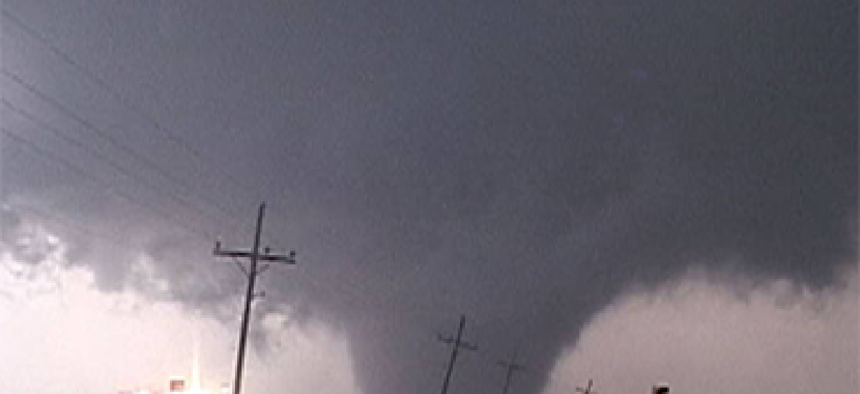OPM: Telework plans should be part of disaster prep

Mobile Work Exchange advises: The time to discover your plans are inadequate is before you need them to work.

A tornado can turn a rainy day into a disaster in a matter of minutes. (NOAA file photo)
As the country enters what the National Oceanic and Atmospheric Administration predicts will be an extremely active hurricane season, and with violent weather recently turning deadly in Oklahoma, the Office of Personnel Management released a friendly reminder to feds to prepare for potential disasters.
The memo covers several policies agencies use to guide federal employees in times of severe weather, natural disaster and other emergency situations, such as pay and leave information and emergency-driven critical hiring initiatives. It also advocates telework as a means to mitigate lost production during disasters like last year's Hurricane Sandy or 2010's famed "Snowmageddon."
"One of the major benefits of telework is its ability to help maintain the continuity of government operations during emergency situations, while ensuring employee safety. If covered in its employees' telework agreements, an agency may require teleworkers to continue working at alternative worksites, if they are able to do so, on their telework days or on any of their regularly scheduled workdays during emergency situations," the May 31 memo states.
Agencies do not have to designate teleworkers as emergency employees to require them to work during a closure, but OPM recommends agency managers talk to their telework-eligible employee ahead of time to remind them that they may be so required. "All expectations should be included in employee telework agreements," the memo states.
Cindy Auten, general manager for Mobile Work Exchange, said agencies were mandated by the Telework Enhancement Act to include telework in their continuity of operations (COOP) strategies in direct response to Snowmageddon, which buried the Beltway in snow and shut down a sizable chunk of the federal government. But Auten said having a plan and knowing it works are two different things, noting that agencies should frequently test portions of their COOPs to ensure operability when disaster strikes. Many agencies, she said, make use of the Mobile Work Exchange's Telework Week by stress-testing their systems.
For example, the Department of Transportation ran a "mock snowstorm" exercise in March 2012 during Telework Week, where the agency closed its headquarters for one work day and ordered its 6,000 employees to telework. In a follow-up presentation after the exercise, John Porcari, deputy secretary of DOT, explained that only 62 percent of eligible employees teleworked on the day, and highlighted IT issues the department experienced: a need for more licenses for remote desktop users, spikes in help desk queries and challenges in bandwidth to accommodate all its remote users.
"But by stress-testing the system, we have a much better idea of how it will perform in an actual emergency," said Porcari, speaking at the Fall 2012 Town Hall Meeting hosted by Mobile Work Exchange. To help avoid substantial interruptions and lost productivity during emergency situations, Auten recommends agencies:
• Determine employee eligibility by identifying who can and cannot telework in the event of an emergency;
• Develop a contingency plan and communicate clear expectations for employees and managers;
• Test it out: Encourage employees and managers to try teleworking periodically to see what works and what doesn't, examining management and IT best practices;
• Ensure employees fully understand and have access to the technology and tools they need to collaborate and access information remotely;
• Ensure IT bandwidth can handle the additional demand.
NEXT STORY: OMB charts a new course in data center program






